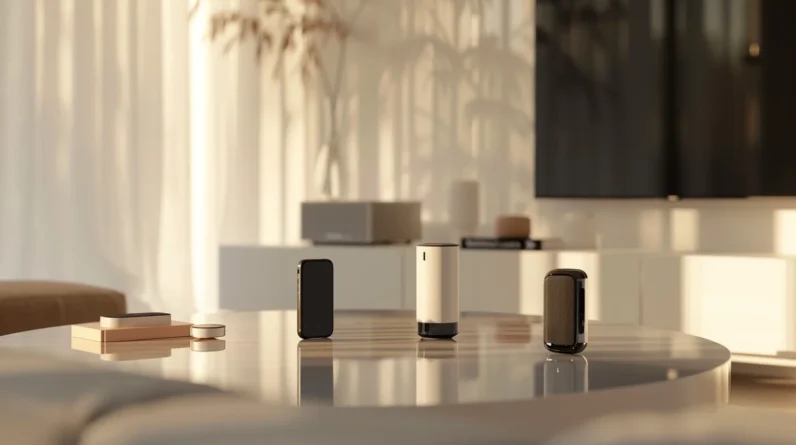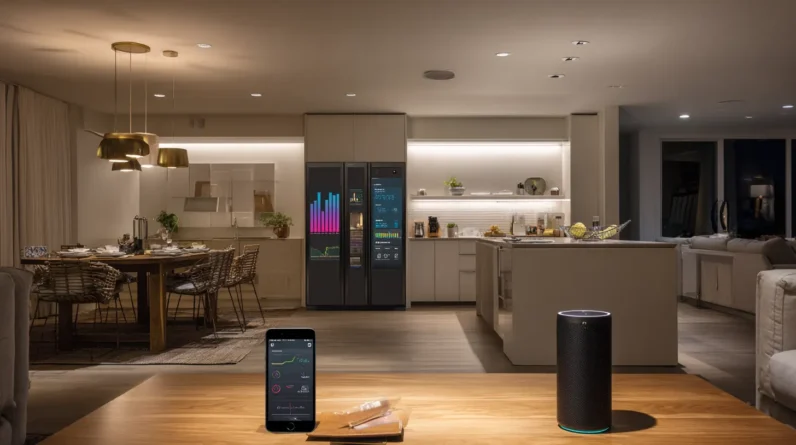
Smart Home Energy Efficiency
Smart home energy efficiency is becoming increasingly popular with homeowners looking to save money, reduce their environmental footprint, and increase their home’s comfort level.
Smart home devices not only make everyday living easier, they also help homeowners save money and reduce their carbon footprint. By taking advantage of the latest smart home technology, homeowners can save up to 50% on their energy bills and reduce their environmental footprint by up to 25%.
So if you’re looking for ways to save money and protect the environment, smart home technology is an excellent place to start. With these devices, you can control your thermostat, turn off appliances and electronics when not in use, reduce water usage, and more.
There are many ways to achieve smart home energy efficiency, but one of the most important is to reduce electricity consumption. This can be done by changing your habits and investing in smart energy-saving devices.
1. Smart Appliances
Smart appliances can help you save money and the environment by helping you use energy more efficiently. For example, a thermostat can adjust the temperature of your home based on what room you’re in and turn off lights when not needed.
Another way to save energy is by using smart plugs. These plugs can be used to bring any device or small appliance online and automatically turn it on when you need it and off when not.
Additionally, many smart appliances can self-diagnose problems when they happen to make the repair process much quicker and less expensive than it would otherwise be. This helps to prevent costly repairs and reduces overall energy consumption.
2. Smart Lighting
Smart lighting is one of the easiest ways to save money and the environment, thanks to LED bulbs that use less energy than traditional incandescents. Plus, they come with features like remote dimming and color temperature adjustment to help create a pleasant ambiance throughout your home.
You can also set a schedule for your lights to turn on and off at specific times. This helps ensure that your lights never stay on when you don’t need them.
You can even connect your lights to Apple HomeKit, Google Home or Amazon Alexa for a more hands-free experience. Or, you can connect them to applets such as IFTTT and use them to set up routines that turn on the lights when you wake up, when it’s time for bed or when you receive an important email or text.
3. Smart Plugs
Smart plugs turn devices into smart appliances by connecting them to an app, voice assistant, or another intelligent home device. They can also be set up to automatically switch devices off when you leave the house.
They are a great way to cut down on energy usage and avoid power surges. They also cut down on the possibility of electrical fires in your home.
Many smart plugs offer a variety of features that allow you to track the amount of energy a device uses. You can then use that data to make changes to your appliances to save money and energy.
Smart plugs are a great way to save money on energy and reduce your carbon footprint. They also help keep your home safe by turning off your appliances when you aren’t using them.
4. Sensors
Smart home energy efficiency devices can save you money by reducing your electricity, water and gas usage. They can also help the environment by lowering your carbon footprint and preventing waste.
Light sensors, for example, can help you cut down on your power bill. These sensors monitor the motion in a room and trigger the lights to turn on and off accordingly.
However, they use a bit more energy than regular lights because of phantom energy that’s running in standby mode when the sensor doesn’t sense any motion.
The good news is that this kind of energy usage is not that high compared to the amount that lights in general consume. So, if you have some extra cash in your wallet, it’s worth investing in energy-efficient LED or CFL lights to reduce your electricity bill.
5. Energy Monitors
Home energy efficiency is about much more than saving money – it’s also about helping the environment. Using less electricity in your house, especially from large appliances, is the best way to help reduce your carbon footprint.
Energy monitors measure your electricity and gas use in real-time, enabling you to see how much you’re spending and how to save money. They can also be used in conjunction with prepayment meters to budget more effectively.
There are many different types of energy monitors available, so it’s important to choose one that suits your needs and budget. Look for a device that can display usage in pounds or kilowatt hours, and features real-time cost tracking.
Finally, homeowners can save energy and reduce their environmental footprint by using smart home energy management systems. Smart home energy management systems allow homeowners to monitor their energy usage in real-time and make adjustments to reduce their energy consumption. With a smart home energy management system, homeowners can set up alerts to let them know when their energy usage is too high, and they can adjust their usage accordingly.
Also, smart home energy efficiency can be enhanced by using renewable energy sources such as solar power or wind energy. By installing solar panels or a wind turbine, homeowners can generate their own energy and reduce their energy bills. This is an excellent way to reduce the environmental impact of energy usage and save money on energy bills.
Conclusion
Smart home energy efficiency is the perfect solution for homeowners looking to save money, reduce their environmental footprint, and increase their home’s comfort level. With the help of smart home technology, homeowners can save greatly on their energy bills and reduce their environmental footprint. With a little bit of planning and the help of smart home devices, homeowners can enjoy a comfortable and energy-efficient home.







